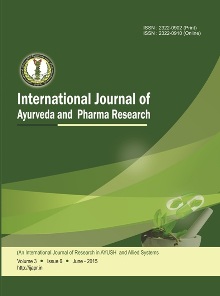Comparative Acute Toxicity Profile of Rasapushpa Prepared by Classical and Conventional Methods
Abstract
Rasapushpa, an Ayurvedic mercurial preparation, is a very potent formulation due to its therapeutic properties but carries potential risks due to the presence of mercury. The acute toxicity of Rasapushpa, prepared by two distinct methods- the classical Valukayantra method (RPVY) and the conventional Electric Muffle Furnace method (RPEMF)- was assessed in Wistar rats. Using the OECD Test Guideline 423, the study determined the lethal dose (LD50) and observed any clinical signs of toxicity following oral administration. Objectives: To evaluate the Acute toxicity study of Rasapushpa prepared by both methods. Materials and Methods: This comparative Acute toxicity study was conducted at the Ribosome Research Centre, Kudsad, Surat, using two samples of Rasapushpa: RPVY (classical method) and RPEMF (conventional method). By adopting OECD Test Guideline 423. Discussion: Rasapushpa prepared by Valukayantra (RPVY) exhibited LD50 at 300mg/kg body weight, while Rasapushpa prepared by Electric Muffle Furnace (RPEMF) showed LD50 higher than 2000 mg/kg. Conclusion: After human dose conversion, both samples were found safe in the dose range given by Rasatarangini for Rasapushpa (62.5 to 312.5 mg).

Copyright (c) 2025 International Journal of Ayurveda and Pharma Research

This work is licensed under a Creative Commons Attribution-NonCommercial-ShareAlike 4.0 International License.


